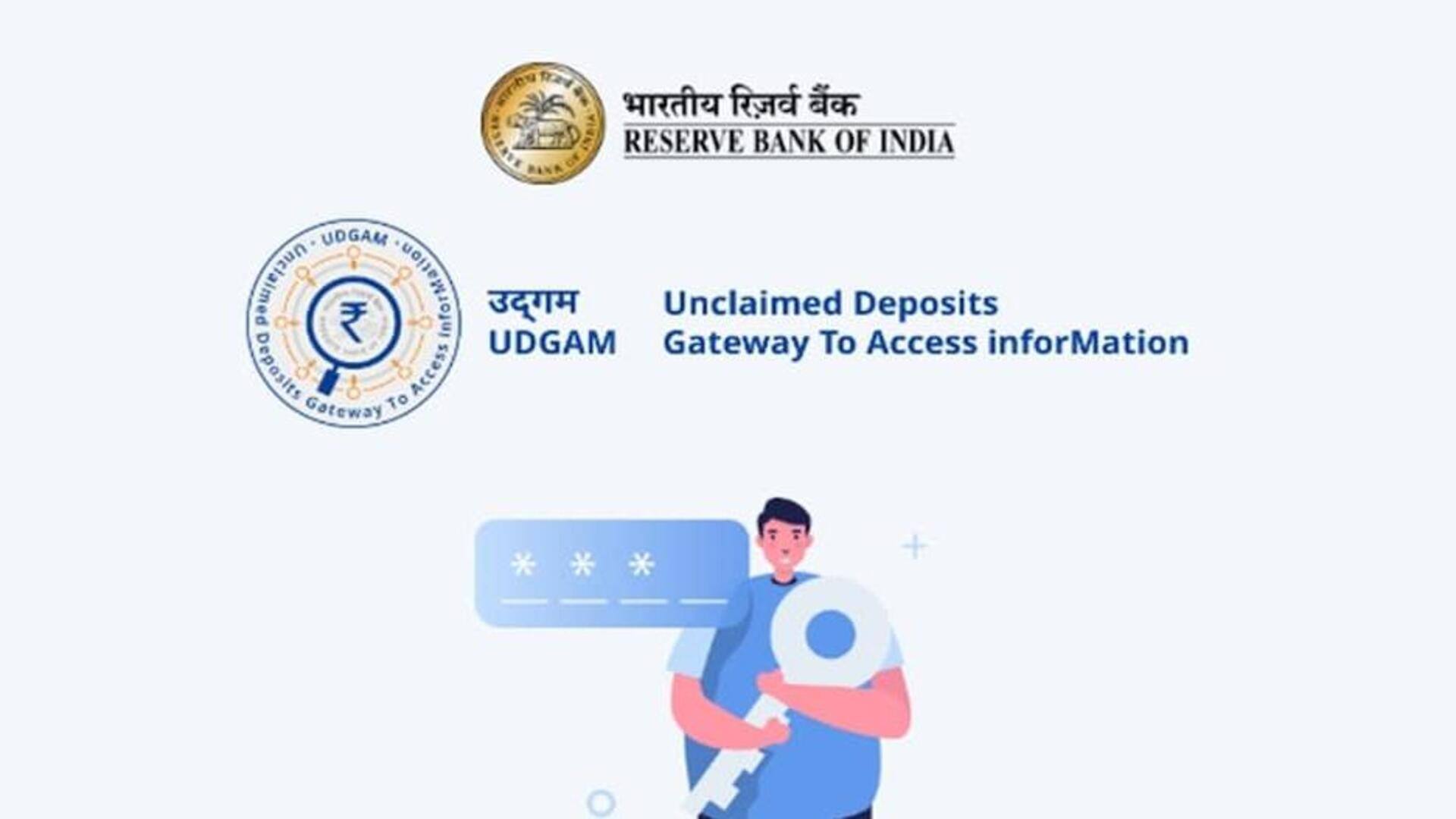
RBI's UDGAM portal helps you find and claim unclaimed deposits
What's the story
The Reserve Bank of India (RBI) has launched UDGAM, a centralized web portal designed to help the public with unclaimed deposits across multiple banks. UDGAM stands for Unclaimed Deposits Gateway to Access Information. It lets people search and claim deposits. Currently, the portal features unclaimed deposits from seven banks, including the State Bank of India, Punjab National Bank, Citibank, Central Bank of India, Dhanlaxmi Bank, South Indian Bank, and DBS Bank India.
Details
People can either claim the deposits or reactivate their accounts
UDGAM was developed through a collaboration between the Reserve Bank Information Technology (ReBIT), Indian Financial Technology & Allied Services (IFTAS), and participating banks. The portal assists users in identifying unclaimed deposits or accounts and enables them to claim the deposit amount or reactivate their accounts with their respective banks. The RBI first talked about developing a centralized portal for unclaimed deposits on April 6 as part of its Statement of Developmental and Regulatory Policies.
What Next?
Remaining banks will get UDGAM functionality by October 15
As of February 2023, public sector banks had transferred approximately Rs. 35,000 crore in unclaimed deposits to the RBI. That only includes deposits that had been inactive for 10 years or more. To protect depositors, the RBI has been implementing various measures to ensure that existing unclaimed deposits are returned to their rightful owners or beneficiaries. The UDGAM search functionality for the remaining banks will be rolled out in phases by October 15, 2023.
How-to
How to search for unclaimed deposits?
To use UDGAM, people have to visit udgam.rbi.org.in and register with their mobile number. Once the registration is complete, users can log in to the portal with the registered mobile number and the password they set during registration. After logging into the portal, users can search for unclaimed deposits by entering the account holder's name and bank's name. They also have to enter either the PAN, voter ID, driving license, passport number, or date of birth of the account holder.